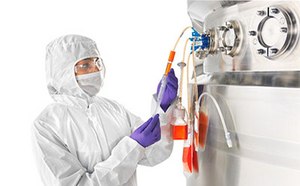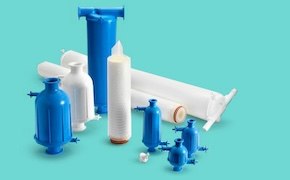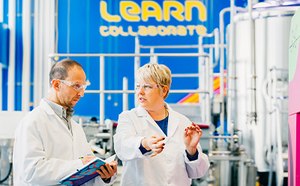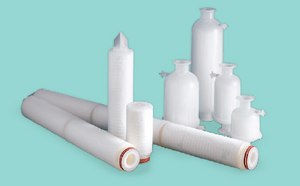Bioburden and Aseptic Control Strategy
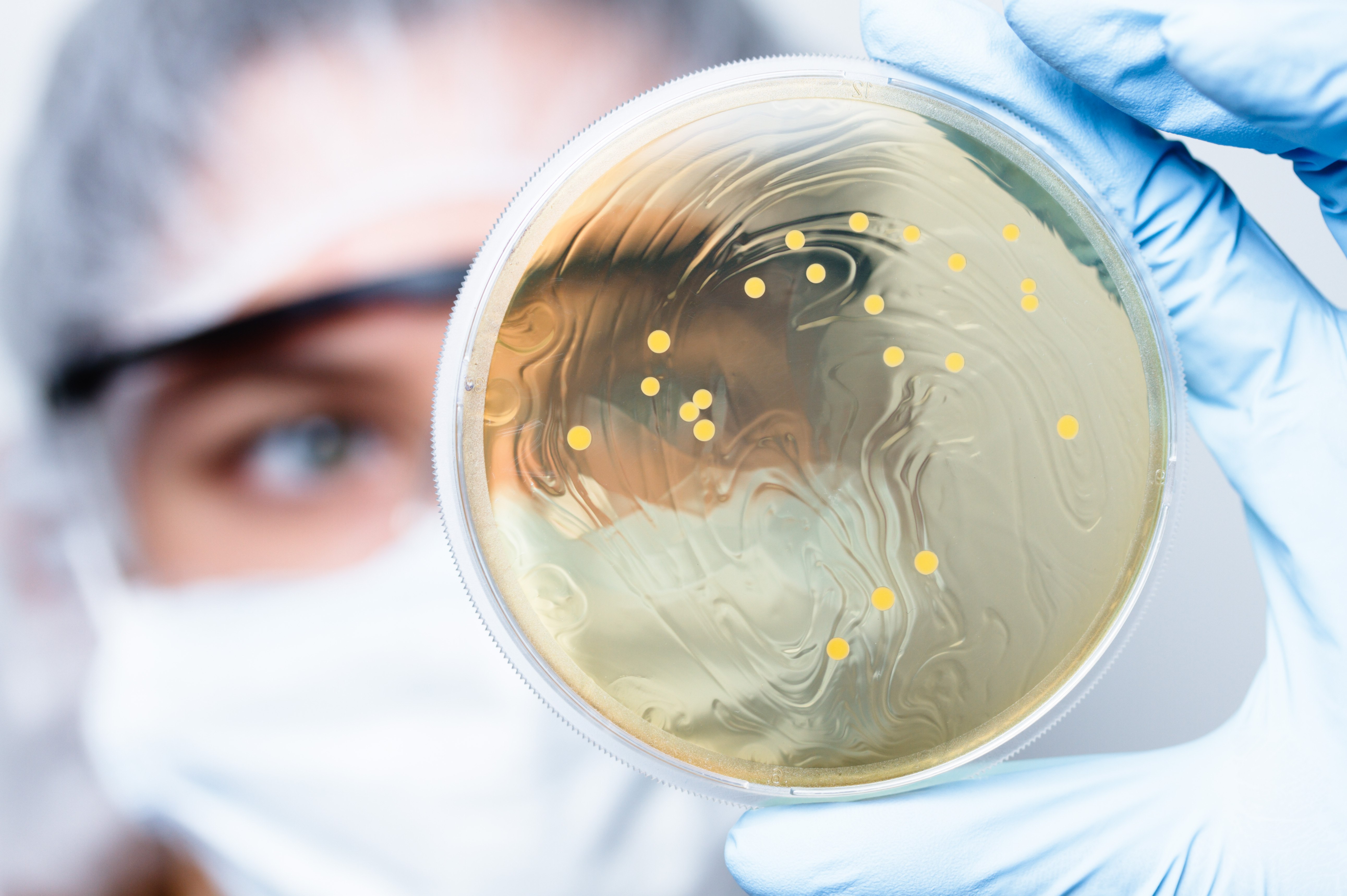
Bioburden control in pharma or biopharma processes is critical to assuring the microbial safety of the drug for patients. Bioburden reduction or sterilizing filters are an integral component of all bioburden control strategies. Environmental monitoring, sterility testing, and bioburden testing confirm process control.
Featured Categories
Ensure aseptic sampling with NovaSeptum® GO: Flexible, safe, contamination-free closed...
Sterile filtration is used throughout drug production to control bioburden. Learn how...
Our off-the-shelf and customizable bioprocessing cell culture media (CCM) products...
Gas filters or vent filters maintain ambient pressure in biomanufacturing systems and tanks. Learn more about sterile air filters for venting in biopharma.
Bioburden control
Biopharma processes are at greater risk of microbial contamination than classic pharma processes, often requiring different control strategies. Manufacturing operations must consider the sources of bioburden, different options for bioburden control, and the various requirements for control at different steps throughout processing. Process designs that minimize the risk of bioburden contamination will reduce process-related failures and the resulting investigations.
Every bioburden control strategy relies on three core elements:
- Assessing the needs for bioburden control at different steps in the production process
- Confirming performance as expected under process conditions
- Monitoring the process to confirm bioburden control is maintained during every production run
Filter selection for bioburden control: bioburden versus sterility
Filtration technologies are a key component of every bioburden control strategy. Different types of filters are used throughout pharma and biopharma manufacturing to control different aspects of the processing environment. Gas or vent filters, for example, maintain the boundary between the environment and the fluid path; these filters prevent microbial ingress to the process fluid and minimize the risk of potentially harmful materials releasing to the environment.
Sterility of the final drug product requires that the fluid stream be processed through multiple bioburden reduction or sterilizing filters at different steps. Selection of a bioburden reduction or sterilizing filter is highly dependent on the specific operation and process risks, guided by risk analysis. Information on the process fluid, its compatibility with filter materials, and process requirements for either bioburden reduction or sterile filtration, informs filter selection. Other important considerations include confirming that the specifications of the filter meet operating requirements, as well as availability of a format and size that meet specific process needs.
Different filter formats offer flexibility:
- Cartridge filters are commonly used for larger processes requiring more filtration area and/or lower unit operating cost. These filters are used with stainless steel housings and can withstand autoclaving and multiple steam-in-place cycles.
- Capsule filters are disposable self-contained filters that eliminate the time and expense associated with assembling, cleaning, and validating stainless steel housings. Capsules may be sterilized by autoclaving or gamma irradiation, or may be purchased pre-sterilized.
Working with an experienced filtration partner can simplify selection of gas and vent, bioburden reduction, or sterilizing filter products.
Optimizing filter performance
After narrowing down the bioburden reduction or sterilizing filter options, the next step is to optimize performance of the filters or filtration train to maximize process efficiency. Prefilters are a cost-effective option to reduce the levels of particles in process streams and are often used to increase the volume processed through more costly sterilizing filters. The right prefilter should provide the required product quality and improve overall process economics.
A component of filter selection and filter train optimization is a filter sizing, or a Vmax™ study with process fluid. The results of these small-scale studies are used to estimate filter area requirements for larger, production-scale processes.
Confirming filter performance
Once selected, regulatory guidance requires that manufacturers of pharma and biopharma products must demonstrate their filters are suitable for use. These requirements are dependent on the claims for microbial removal: filters for bioburden reduction have different requirements than sterilizing filters at critical process steps. Regulatory guidance outlines expectations for confirming filter suitability and validating performance.
During each production run, filter performance must be verified. Integrity testing is a simple way to confirm that the filter delivers the expected level of microbial retention. Where sterility is claimed, regulatory agencies worldwide require that filter integrity is verified before and after use.
Successful integrity testing is a critical link between validation of the filter and the production run. As pharma and biopharma processing systems have evolved, there has been increased regulatory focus on integrity testing, system design, and where integrity testing is performed. Understanding the requirements and associated risks can inform filtration system design.
Visit our document search for data sheets, certificates and technical documentation.
Related Articles
- Multivariate data analysis (MVDA) makes possible a proactive, real-time approach to monitoring, controlling, and predicting quality and productivity in biomanufacturing. The use of proven software with guided PCA and PLS model creation means you don’t need to be a data scientist to explore and analyze your data.
- Key aspects of single-use assembly qualification including quality by design (QbD), quality risk management (QRM) and operator handling and training.
- Before adoption of single-use technologies in biomanufacturing, manufacturers must assess the risk to the drug product from potential leachables. This article highlights a general approach based on the United States Pharmacopeia (USP).
- Discover how low-impurity iron sources improve reliability and performance in recombinant protein production with EX-CELL® Advanced medium.
- How software can simplify 21 CFR Part 11 and EudraLex Volume 4 Annex 11 compliance and provide additional benefits such as access control, audit trails and easier search and retrieval.
- See All (15)
Related Protocols
- This article describes a purification process resulting in low nanoparticulate impurities sucrose, enabling more stable protein formulations.
- See All (1)
Find More Articles and Protocols
Related Webinars
This webinar will provide recommendations for a well designed approach to validating filter use for multiple batches or extended processing time.
This webinar will compare the current version with the proposed changes and highlight areas of specific interest to companies who either manufacture in or export to EMA countries, PICS member countries, and WHO compliant countries.
This webinar describes a filtration model and test methodology to rapidly and efficiently design an optimal dual-stage filtration process.
Related Resources
- Brochure: Mission: Control - Strategies for Effective Bioburden and Aseptic Control
This brochure discusses Radiello® Passive Samplers and their application in vapor intrusion assessments.
- Article: A Holistic Approach to Bioburden Control in Downstream Processing
This article highlights the need for effective strategies to monitor and control microbial contamination in bioprocessing environments.
- Article: Validation and Qualification of Sterile Filters for INDs
The manufacture of investigational medicinal products presents additional challenges and complexity in comparison to commercially manufactured and marketed products.
- Brochure: Vmax™ Constant Pressure Test for Reliable Filter Sizing
This document describes how to perform a small-scale normal flow filtration study with Vmax™ filter sizing method to assess the performance of any feed solution on a membrane filter.
How Can We Help
In case of any questions, please submit a customer support request
or talk to our customer service team:
Email custserv@sial.com
or call +1 (800) 244-1173
Additional Support
- Chromatogram Search
Use the Chromatogram Search to identify unknown compounds in your sample.
- Calculators & Apps
Web Toolbox - science research tools and resources for analytical chemistry, life science, chemical synthesis and materials science.
- Customer Support Request
Customer support including help with orders, products, accounts, and website technical issues.
- FAQ
Explore our Frequently Asked Questions for answers to commonly asked questions about our products and services.
To continue reading please sign in or create an account.
Don't Have An Account?